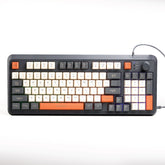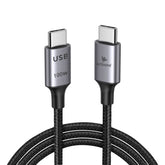How To Install, CCTV Repair And Troubleshoot A CCTV Installation?
CCTV systems are a great way to keep your business secure and monitor activity outside the building. If there are any problems with the installation or repair, it's important to get them fixed as soon as possible. This guide will teach you everything you need for repairs to go smoothly. From troubleshooting common issues to repairing different types of CCTV systems, this comprehensive guide will help you get your CCTV repair and service up and running in no time! So, don't wait any longer and get started with repairs today!
Installing a CCTV system is an important step in protecting your property and ensuring the safety of your family and belongings. It is important to understand the basics of how to install a CCTV system in order to ensure that it is done correctly and efficiently. This essay will discuss the six main steps involved in installing a CCTV system, including selecting the right equipment, setting up the cameras, connecting the system to a monitor, configuring the system, testing the system, and maintaining the system.
Selecting the Right Equipment
The first step in installing a CCTV system is selecting the right equipment. It is important to choose the right type of camera for your needs, as well as the right type of monitor and recording device. The type of camera you choose should depend on the area you are trying to monitor, as well as the type of activity you are trying to capture. For example, if you are monitoring an outdoor area, you may want to choose a camera with night vision capabilities. Additionally, you should consider the resolution of the camera, as well as its field of view and other features such as motion detection and pan-tilt-zoom capabilities.
Setting up the Cameras
Once you have selected the right equipment, the next step is to set up the cameras. This involves mounting the cameras in the appropriate locations and connecting them to the recording device. It is important to make sure that the cameras are mounted securely and that they are pointed in the right direction in order to capture the desired footage. Additionally, it is important to make sure that the cameras are not visible to potential intruders in order to ensure that they are not tampered with.
Connecting the System to a Monitor
The next step is to connect the system to a monitor. This involves connecting the recording device to a monitor or television in order to view the footage. Depending on the type of system you have, this may involve connecting the recording device directly to a monitor or connecting it to a computer and then connecting the computer to a monitor. Additionally, it is important to make sure that the monitor is placed in a secure location in order to prevent potential intruders from tampering with it.
Configuring the System
Once the system is connected to a monitor, it is important to configure it properly in order to ensure that it is capturing the desired footage. This involves setting up motion detection settings, as well as configuring other settings such as recording schedules and resolution settings. Additionally, it is important to make sure that all of the cameras are connected properly and that they are all pointed in the right direction in order to capture the desired footage.
Testing the System
Once the system is configured properly, it is important to test it in order to make sure that it is working correctly. This involves viewing footage from each camera and making sure that it is capturing what it should be capturing. Additionally, it is important to make sure that all of the settings are correct and that all of the cameras are pointed in the right direction.
Maintaining the System
The final step in installing a CCTV system is maintaining it. This involves regularly checking all of the components of the system in order to make sure that they are working properly. Additionally, it is important to make sure that all of the cameras are pointed in the right direction and that they are capturing what they should be capturing. Additionally, it is important to make sure that all of the settings are correct and that all of the components are functioning properly.
The Types of CCTV Systems
Choosing the right type of CCTV system for your business is essential if you want to keep security and surveillance at the top of your list. There are three main types- analogue, digital and IP- each with its benefits and drawbacks.
Analog CCTV systems are usually cheaper than digital or IP systems, but they have one major disadvantage- footage can't be accessed or viewed remotely.
Digital CCTV systems tend to be more expensive than analogue ones, but they offer the advantage of being able to store footage for later retrieval. They can also be used as a security camera solution because they transmit footage directly to a server, allowing live monitoring from anywhere in the world.
IP cameras are the most advanced type and provide features such as facial recognition software that make them ideal for high-security applications like prisons or retail stores where theft is common.
Troubleshooting CCTV Problems
If you're experiencing problems with your professional CCTV installation service, following these simple steps can help you sort things out quickly. By understanding how CCTV works and following the correct procedure, you'll be able to identify and fix any issues. In addition, keeping a backup of footage is important in case something goes wrong. Troubleshooting CCTV problems isn't as difficult as it might seem - just follow these easy steps!
How to Fix Common Issues with Cameras and Cables?
CCTV systems are an important part of security and surveillance, and as such, it is important to be able to troubleshoot and repair them when necessary. This guide provides a comprehensive overview of the basics of CCTV - cameras, cables, signal transmission, etc. - so that you can better understand how these systems work.
In addition to explaining common issues with camera installation and functioning, this guide also contains illustrations that make the repair process much easier to follow.
How to Repair or Replace a Camera?
There are various reasons why cameras may stop working. In most cases, the camera can be repaired or replaced without any problems. However, it is always important to test the camera before any repairs so that no further issues arise.
It is also advisable to keep your CCTV installation updated to function properly and deliver high-quality footage. Furthermore, installing a backup camera will help in an emergency situation where you need to access footage from past incidents quickly and easily.
Conclusion
Have you ever found yourself struggling to troubleshoot or repair a CCTV installation? If so, you're not alone. Here we have compiled a comprehensive guide to help you understand the basics of CCTV repair and troubleshooting with the best CCTV camera repair in UAE. This guide has everything from understanding the components of CCTV systems to solving common problems. So, whether you're a beginner or an experienced technician, check it out!



